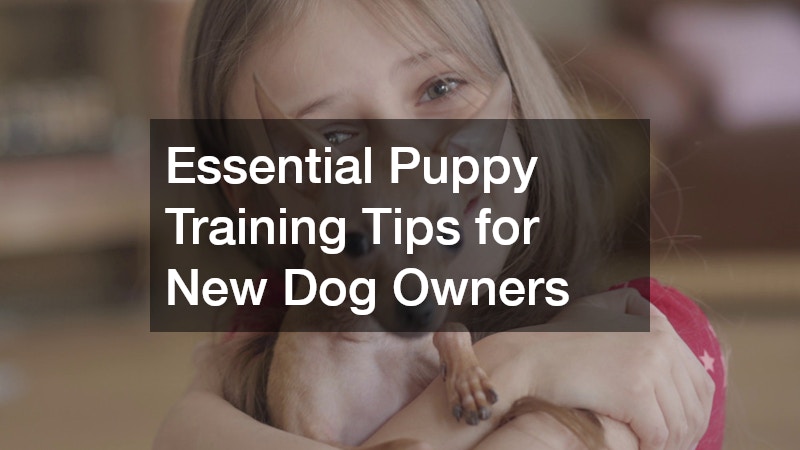
Embarking on the journey of raising a puppy is both thrilling and overwhelming. To help new dog owners navigate this exciting phase, we've compiled essential training tips that cover the most frequently asked questions about puppy training. Whether you're wondering about housebreaking or basic commands, these insights aim to equip you with the knowledge to raise a happy and well-behaved pup.
Video Source
Potty training a puppy can vary based on their breed, age, and individual temperament. Puppies typically have the physical ability to hold their bladders for about an hour per month of age, which helps you set a baseline for how often they need to go out. Knowing the general timeline allows new owners to set realistic expectations, reducing frustration and enhancing the overall training experience.
The adaptability and learning speed of your puppy plays a significant role. Smaller breeds often need to be taken out more frequently, while larger breeds might respond differently. Observing your puppy's cues is essential in determining the best potty training regimen for them.
Patience and consistency are critical during the potty training phase. Puppies may need weeks or even a few months to fully grasp potty training, depending on their unique characteristics. Celebrating small milestones during this journey helps solidify positive behavior.
Establishing a consistent potty training schedule is crucial. Puppies thrive on routine, so taking them out at specific intervals, such as after eating or waking up, can optimize training success. Consistency ensures your puppy knows what to expect, which helps build security and promotes learning.
It is recommended to take puppies out every two hours initially. Tracking their natural potty rhythms can aid in tailoring the schedule to their needs, making the process more effective. A well-structured schedule also alleviates anxiety and fosters a structured environment.
Accidents are part of the learning process. Reacting with patience and positivity is vital, as negative reactions can lead to training setbacks and stress for your puppy. Instead, focus on praising successful attempts and gently redirecting when mishaps occur.
When an accident happens, clean the area thoroughly to remove scents that might encourage repeat behavior. Introduce enzymatic cleaners specifically designed for pet accidents to ensure effective deodorization. Consistent cleaning prevents the formation of a new habit, ensuring ongoing success.
Discover the essential commands every puppy should learn first, starting with sit, stay, and come. These commands are fundamental for safety and enhance communication between you and your puppy. By mastering these, your puppy builds a foundation for more advanced learning.
Start with the "sit" command, as it is often the easiest for puppies to grasp. Use treats and your puppy's favorite toy as motivation, reinforcing obedience with rewards. A confident "sit" command can serve as the building block for commands like "stay" and "come."
The "stay" command requires patience, gradually increasing the distance and time of holding the position. It's crucial for situations where you want your puppy to remain calm and patient. Lastly, the "come" command is essential for safety, especially outdoors or in open spaces.
Explore the power of positive reinforcement, using treats, praise, and play to encourage desired behavior. Puppies thrive on immediate feedback, and consistently rewarding good behavior enhances learning and builds a strong, trusting relationship. This technique not only reduces anxiety but also transforms training into a bonding experience.
A well-timed treat can be a powerful motivator, especially when your puppy displays the correct response. Praising your puppy enthusiastically can substitute treats, particularly if they tend to become treat-dependent. Experiment with different types of rewards to discover what excites your puppy the most.
Every puppy is unique and may face challenges during socialization. Fear or over-excitement are common barriers that require gentle guidance and reassurance from their owner. Observing your puppy’s body language and responses is key to fine-tuning the socialization process.
If your puppy shows signs of fear, retreat calmly and try another day, slowly increasing exposure over time. Positive reinforcement and encouragement can turn nervousness into confidence. Introducing fearful scenarios step by step ensures your puppy learns to navigate their environment safely.
On the other hand, over-excitement can be tempered by redirecting energy through play and commands. Creating structured environments helps manage high-energy responses, cultivating calmness over time. Balanced socialization shapes a well-rounded, friendly companion ready for diverse life experiences.
Successful puppy training requires patience, consistency, and a positive approach. By addressing common concerns about potty training, basic commands, and socialization, new dog owners can navigate the early stages of their puppy's life with confidence. Remember, every puppy is different; being attuned to your pup's needs is key to raising a well-behaved and happy dog.
.